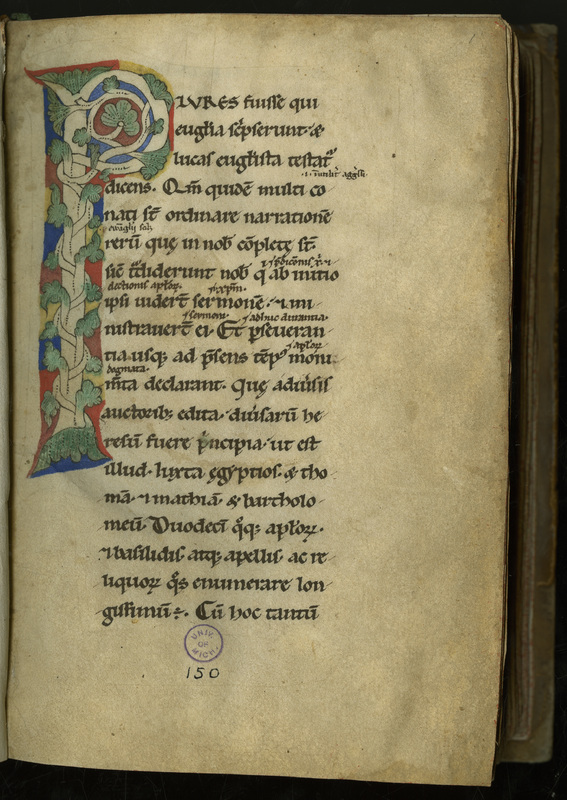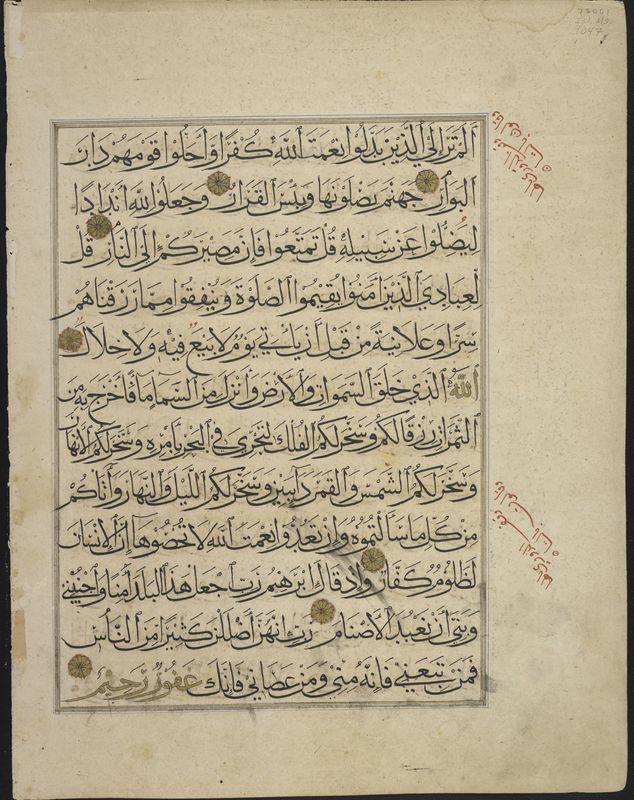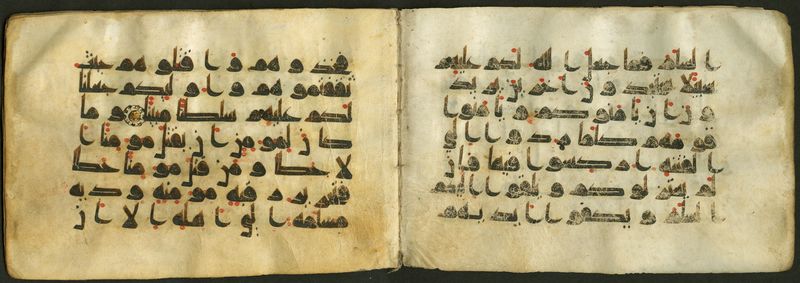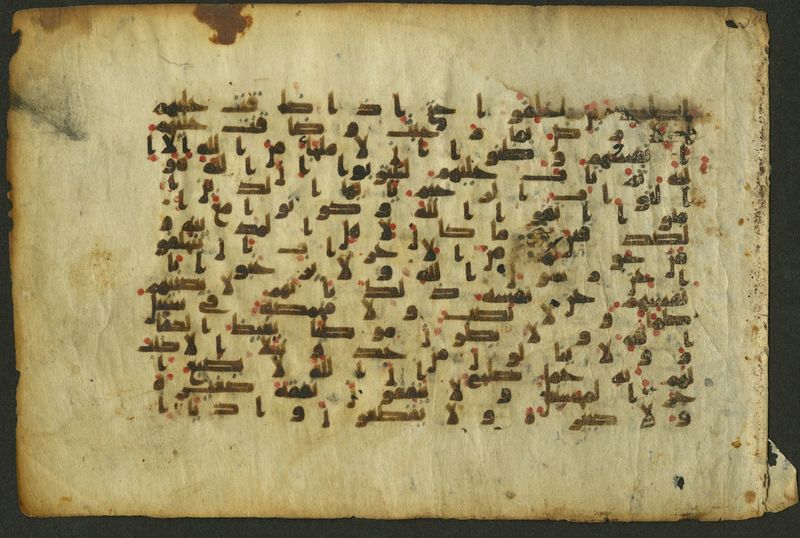The Qur'an: Early transcription
The Qur'an is the Islamic scripture. Muslims regard the Qur'an as the revealed word of God, received and transmitted by his messenger Muhammad (d.632) in the seventh century CE. Originally transmitted orally and regularly recited as a matter of worship and piety, the text of the Qur'an was authoritatively established within twenty years after the Prophet Muhammad's death. This form became the model for subsequent copying and distribution. Qur'anic recitation and calligraphy are among the most respected forms of art in Islam, and each are performed according to well established rules (eg tajwīd for recitation) that are transmitted from master to student.
The manuscripts featured here represent a style of Qur'anic transcription which flourished in the early ʿAbbāsid period of Islamic history, that is from the mid-8th century to the 10th century AD.
Copies of the Qur'an produced in this period exhibit a number of common features, namely: a horizontal (oblong) codex format, use of parchment as writing material, use of colored inks and gold for functional decorations and vocalization, and writing in thickly lined scripts -- referred to as early Abbasid or Kufic -- featuring elongated horizontal strokes and uniform spacing between groups of letters.
As evident here, Qur'anic manuscripts from this era typically survive in fragments, with the folios of original codices now dispersed across collections. Projects such as The Digital Muṣḥaf and Corpus Coranicum endeavor to virtually reassemble these dispersed fragments.
Qur'anic fragments from this era are not the earliest extant, but are nevertheless quite valuable for the study of the early transmission of the Qur'an and the history and development of the Arabic language.
As with copies of the Qur'an from the earlier Umayyad period, these early Abbasid copies of the Qur'an were written on parchment. Though long the preferred medium for Qur'anic transcription (as befit the scripture for the earlier traditions of Judaism and Christianity), parchment was eventually supplanted by paper, which was more affordable and more capable of being fashioned in large sizes.

The Latin Vulgate

The Qur'an: Functional formats




